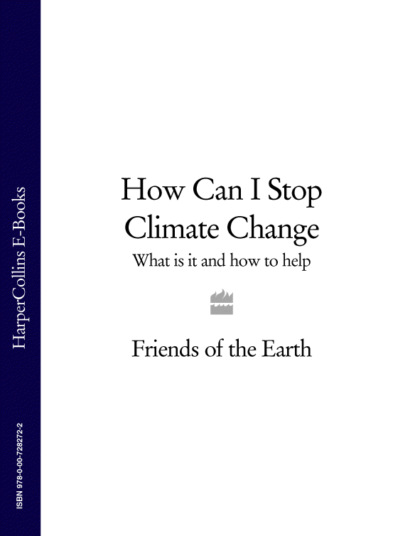По всем вопросам обращайтесь на: info@litportal.ru
(©) 2003-2024.
✖
How Can I Stop Climate Change: What is it and how to help
Настройки чтения
Размер шрифта
Высота строк
Поля
The health of millions is at risk. The very young and very old will be most vulnerable. The IPCC warns of:
more malnutrition with long-term impacts for child growth and development
more deaths, disease and injury due to extreme weather events; people in urban areas will be most at risk – cities intensify temperatures because buildings hold heat
an increase in diseases, including diarrhoea and cholera as a result of water contamination caused by flooding
more problems such as chest infections and asthma because of increased low-level ozone
changes to the way infectious diseases spread.
The warming of colder regions will lead to fewer people dying of the cold. And changes to the climate could limit the spread of malaria in some parts of Africa. But over all, the health benefits of climate change are vastly outweighed by the negative effects, particularly in poorer areas.
Mortality andclimate change Estimated deaths in 2000 attributed to climate change (compared to a 1961–1990 baseline) show that Sub-Saharan Africa and the rest of the developing world bear the health burden of climate change.
the cost to wildlife
Plants, birds and animals cannot easily adjust to rapid changes – either in temperatures or in their food supply. The potential toll on the wildlife-rich rainforest of the Amazon is an extreme example. Experts believe the golden toad and harlequin frog – both native to Costa Rica – have disappeared as a direct result of climate change. Animals as diverse as polar bears, tigers, penguins and pikas are at risk. Some 70 per cent of coral in the Indian Ocean has already died as a result of the heat.
The IPCC predicts that 20-30 per cent of plant and animal species are at an increased risk of being wiped off the face of the Earth if global average temperatures rise by more than 1.5-2.5°C. Indeed some scientists put climate change at the top of the list of threats to biodiversity in many regions.
JUMPING OFF POINT:
Scientist JA Pounds says Central American frog species have disappeared due to deadly infectious diseases spurred by global warming. ‘Disease is the bullet killing frogs, but climate change is pulling the trigger,’ he said.
In the UK long dry periods damage food supplies for migrating birds. Breeding redshanks, lapwings and snipe dropped by up to 80 per cent at five reserves in the south of England following the dry summer in 2005. And warmer seas are leading to fewer plankton off the British coast, with an impact on the sand eel population – resulting in less food for nesting birds like puffins.
As plants, insects, birds and animals migrate so the nature of our landscape will change. Traditional English woodland, populated with oak, beech and bluebells could become a thing of the past, as sycamore becomes the more dominant species and cow parsley could force snowdrops and bluebells out.
the economic cost
It’s easy to see the immediate costs of clearing up damage caused by floods, storms or warping railway tracks; less obviously, farmers across the world are paying the price in lost harvests, lower yields and higher prices. People who rely on rainforests for food, farming and forestry are losing their way of life.
In the developed world, the insurance industry generally picks up the tab for extreme weather. But in Europe the cost of flood damage alone would be expected to rise by up to £82 billion a year, and the costs of Hurricane Katrina have been put at US $125 billion. Many people in the poorest countries do not have insurance policies; but even in the rich developed world, many can’t afford insurance as the risk of extreme weather rises – particularly for those living in flood plains.
An economic assessment of the cost of climate change, commissioned by the UK Government and published in 2006, suggested that unchecked climate change could damage economic well-being worldwide by at least 5 per cent and by as much as 20 per cent. In other words a fifth of the world economy is at risk.
‘The impacts of climate change are not evenly distributed – the poorest countries and people will suffer earliest and most.’ The Stern Review, October 2006
how different temperature rises could affect us
The IPCC predicts temperature increases of 1.8-6.4 °C this century, depending on the amount of fossil fuel used. Its best estimate is 4 °C. While rises at the lower end of this spectrum would have terrible impacts for millions of people around the world, a rise of more than 6 °C could spell shocking global consequences.
HOT TIP:
A future with extreme climate change? Don’t go there. Experiments in South Africa’s Succulent Karoo desert show that a 4-6 °C rise in daytime temperature kills three quarters of plant species.
the six-degree scenario
Evidence suggests that the end-Permian extinction, 251 million years ago, may have been triggered by a rise of temperatures of 6 °C: it almost wiped out life on Earth. Forests, swamps and savannahs were washed away, land turned to desert; the warming oceans, which lose oxygen as temperatures rise, would have become stagnant and toxic. Some scientists believe the warming of the ocean would have been enough to trigger the release of huge clouds of methane from the sea bed, poisoning the atmosphere. Life on Earth did survive 6 °C of warming, but those changes took place over 10,000 years. Human releases of carbon dioxide are almost certainly happening faster than any natural releases since the beginning of life on Earth.
Writer Mark Lynas has studied historical records to examine the potential effects of temperature rises of up to 6 °C. Here is a summary of his six-degree scenario:
+1 °C: Deserts spread across parts of the United States, turning farmland to dust from Canada in the north to Texas in the south. The Gulf Stream could switch off – plunging Europe into an icy winter. Coral reefs around the world are wiped out.
+ 2 °C: Oceans turn increasingly acidic, killing off plankton and affecting sea life. European summers are plagued by heat waves as strong as the killer of 2003. Wildfires spread around the Mediterranean. Greenland tips into irreversible melt, accelerating sea-level rise and threatening coastal cities. The polar bear and walrus become extinct.
+ 3 °C: Deserts spread across parts of Africa, driving millions of refugees to surrounding countries. A permanent El Niño grips the Pacific, causing weather chaos worldwide. Drought and wild fires rage across the Amazon, destroying swathes of forest, releasing yet more carbon. World food running short. Water shortages threaten parts of India, Pakistan, Australia and Peru.
+4 °C: Tens of millions become refugees as rising waters threaten the Nile Delta and low-lying Bangladesh. The West Antarctic ice sheet collapses, pumping 5 metres of water into global sea levels. Southern Europe becomes like the Sahara, with deserts spreading in Spain and Portugal.
+5 °C: The Earth is hotter than at any time for 55 million years. Desert belts expand across Europe, America and Asia. Some populations try to move towards the poles. Most of the world is uninhabitable.
+6 °C: Huge firestorms sweep the planet as methane hydrate fireballs ignite. Seas release poisonous hydrogen sulphide. Most of life on Earth has been extinguished. Humanity’s survival is in question.
chapter 3 (#u7b0d5c0d-3410-57a3-bc01-255b46870878)
how much carbon can we live with? (#u7b0d5c0d-3410-57a3-bc01-255b46870878)
Climate change will get worse if we allow greenhouse gas emissions to grow unchecked. So where are the emissions coming from? And how much more can the planet take?
scientific predictions
Models show that if we go on with business as usual andfail to address greenhouse gas emissions we can expectaverage temperatures across the world to risedangerously. Precisely how much warmer it will get isthe subject of huge investigation but theIntergovernmental Panel on Climate Change (IPCC)gives a range of between 2.4°C and 6.4°C above preindustriallevels by the end of this century. If we don’ttake action, scientists believe the most likely pointwithin that range will be a rise of 4°C by the end of thiscentury – that’s enough to produce catastrophic results.
measuring carbon
The proportion of carbon dioxide in the atmosphere is usually expressed as parts per million by volume (ppmv); this tells us the concentration of carbon dioxide in numbers of molecules per million molecules of air.
Emissions can also be measured by: the weight of carbon dioxide (carbon plus two oxygen atoms) – in grammes, kilogrammes and tonnes – over a period of time. High levels of emissions are measured in millions of tonnes of carbon dioxide or by the weight of carbon alone. One tonne of carbon is equal to 3.67 tonnes of carbon dioxide.
Other greenhouse gases are sometimes expressed in million tonnes of the carbon dioxide equivalent (Mt CO2e) – in other words, the amount of carbon dioxide that would have the same effect.
how high are global emissions?
In a little more than a century human activity has added 200 billion tonnes of carbon to the atmosphere. Today we are pumping out just over 7 billion tonnes of carbon a year – that’s twenty times the weight of all the water in Lake Windermere. It’s also equivalent to 26 billion tonnes of carbon dioxide. A further 1.6 billion tonnes of carbon dioxide emissions each year come from changes in the way we use land – mostly by cutting down forests that, when growing, play a vital role in soaking up carbon dioxide.
Scientists agree that we need to stabilise emissions, then reduce them. But at what level?
carbon footprint
‘Carbon footprint’ can be useful shorthand to describe the amount of carbon dioxide we generate – individually, in our cities, nationally, or from the products we use. The term ‘footprint’ is also used to describe the impact of emissions, by providing a measure based on the area of things like forests, oceans and grassland that are required to absorb the carbon dioxide.
Later in this chapter, we’ll use this measure of impact to look at the carbon footprints of different countries. Elsewhere in the book we’ll be focusing on carbon dioxide emissions, particularly in the UK, where government figures for emissions are given in weight.
the 2°c target
The UK government, together with the rest of the European Union, has pledged to stabilise greenhouse gases to prevent average global temperatures rising more than 2°C above pre-industrial levels. Allow greater temperature change, climate scientists say, and we start to play havoc with agriculture, the economy and the natural environment – committing millions of people to hardship and millions of species to extinction. Perhaps even more worrying is the prediction that a higher rise than 2°C would increase the risk of spiralling and irreversible climate change.











